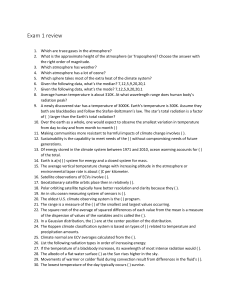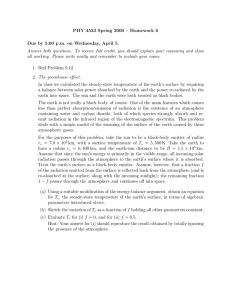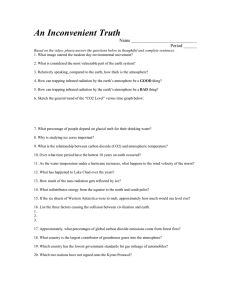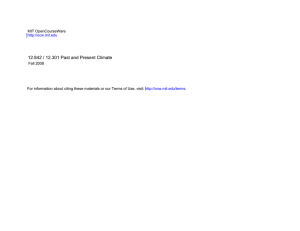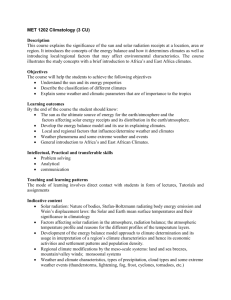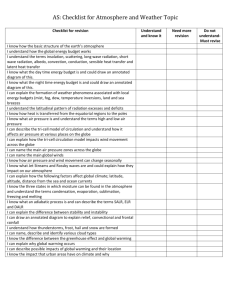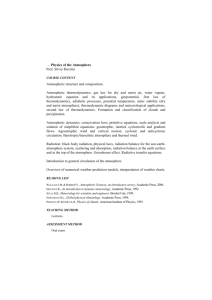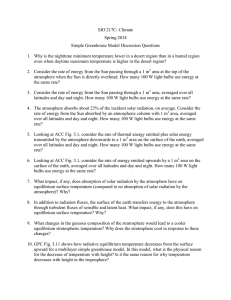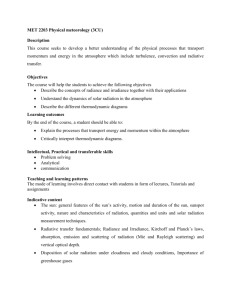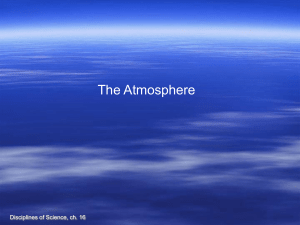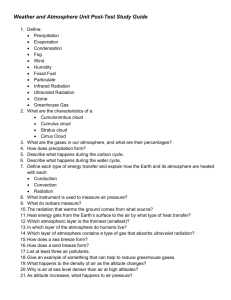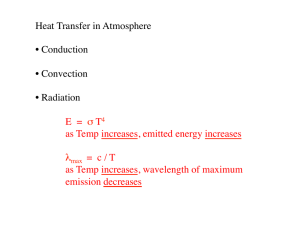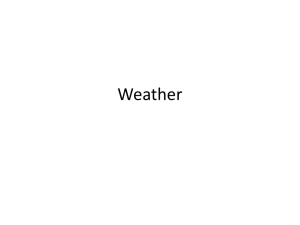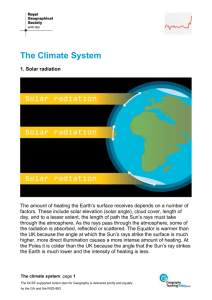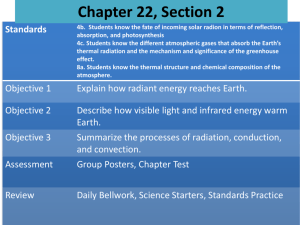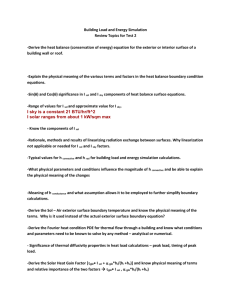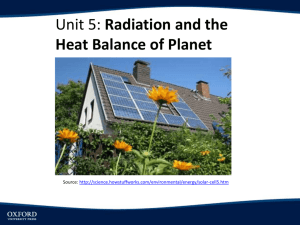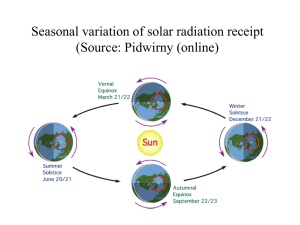Applied Climatology Midterm Study Guide Chapter 1. Intro to
advertisement
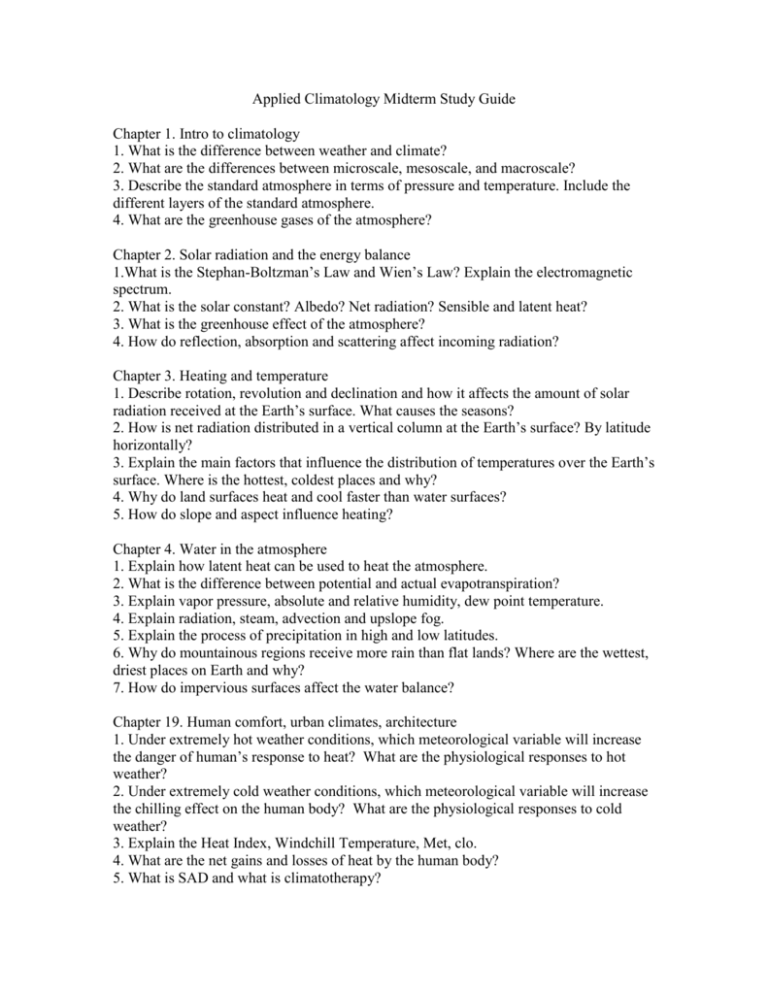
Applied Climatology Midterm Study Guide Chapter 1. Intro to climatology 1. What is the difference between weather and climate? 2. What are the differences between microscale, mesoscale, and macroscale? 3. Describe the standard atmosphere in terms of pressure and temperature. Include the different layers of the standard atmosphere. 4. What are the greenhouse gases of the atmosphere? Chapter 2. Solar radiation and the energy balance 1.What is the Stephan-Boltzman’s Law and Wien’s Law? Explain the electromagnetic spectrum. 2. What is the solar constant? Albedo? Net radiation? Sensible and latent heat? 3. What is the greenhouse effect of the atmosphere? 4. How do reflection, absorption and scattering affect incoming radiation? Chapter 3. Heating and temperature 1. Describe rotation, revolution and declination and how it affects the amount of solar radiation received at the Earth’s surface. What causes the seasons? 2. How is net radiation distributed in a vertical column at the Earth’s surface? By latitude horizontally? 3. Explain the main factors that influence the distribution of temperatures over the Earth’s surface. Where is the hottest, coldest places and why? 4. Why do land surfaces heat and cool faster than water surfaces? 5. How do slope and aspect influence heating? Chapter 4. Water in the atmosphere 1. Explain how latent heat can be used to heat the atmosphere. 2. What is the difference between potential and actual evapotranspiration? 3. Explain vapor pressure, absolute and relative humidity, dew point temperature. 4. Explain radiation, steam, advection and upslope fog. 5. Explain the process of precipitation in high and low latitudes. 6. Why do mountainous regions receive more rain than flat lands? Where are the wettest, driest places on Earth and why? 7. How do impervious surfaces affect the water balance? Chapter 19. Human comfort, urban climates, architecture 1. Under extremely hot weather conditions, which meteorological variable will increase the danger of human’s response to heat? What are the physiological responses to hot weather? 2. Under extremely cold weather conditions, which meteorological variable will increase the chilling effect on the human body? What are the physiological responses to cold weather? 3. Explain the Heat Index, Windchill Temperature, Met, clo. 4. What are the net gains and losses of heat by the human body? 5. What is SAD and what is climatotherapy? 6. What are the 4 ways that urbanization affect the environment? 7. What is the urban heat island and how is it measured? When is the UHI the greatest? 8. How do cities effect humidity, winds, precipitation, fog, clouds, sunlight, temperatures? 9. How can the UHI be reduced? 10. How does traditional architecture reflect its climate? Give examples of climatically adapted buildings in tropical wet; subtropical hot, dry; cold, wet; arctic climates. Describe styles of roofs, windows, wall materials, color, etc.
